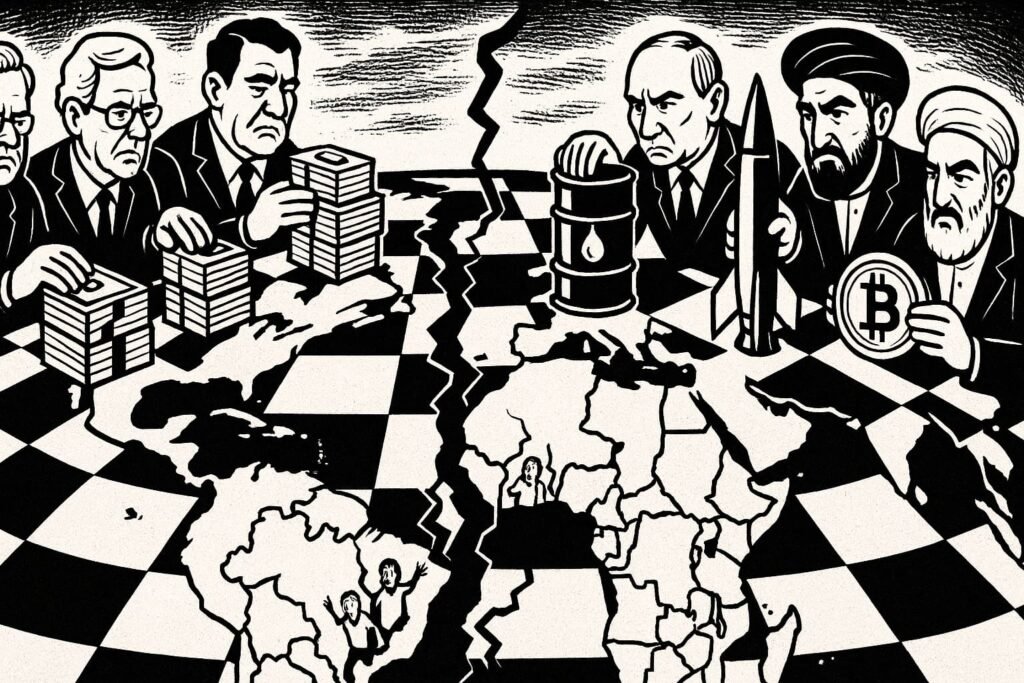Anti-Western Coalition Explained – The New Global Alignments
While the West obsesses over diversity quotas and climate pledges, a new alliance is forming quietly outside its bubble. Russia, China, Iran, and others are building an anti-Western coalition — not out of shared love, but out of shared enemies. The irony: by lecturing the world on “universal values,” the West has pushed much of it into the same camp.
What Is the Anti-Western Coalition?
It’s an informal but growing alignment of states rejecting Western dominance in politics, economics, and culture.
- Core members: Russia, China, Iran, and their client states.
- Supporters: countries in Africa, Asia, and Latin America tired of Western sanctions, conditional aid, or cultural exports.
- Common ground: sovereignty, multipolarity, and resistance to U.S./EU ideological and financial power.
It’s less about love of each other, more about “the enemy of my enemy is my friend.”
Buzzwords & Spin
- “Multipolar world” → the coalition’s polite phrase for a world without U.S. dominance.
- “BRICS” → the economic club (Brazil, Russia, India, China, South Africa) now expanding into a geopolitical bloc.
- “Non-aligned” → the Cold War term making a comeback.
- Western framing: calls it an “axis of autocrats” or “illiberal states,” but often ignores why others are joining.
How It Shows Up in Practice
- Military: Russia and China run joint exercises, sell weapons, and challenge NATO’s influence.
- Economics: BRICS+ nations push alternatives to the dollar, like new trade currencies.
- Energy: Russia and Iran supply oil and gas to China, bypassing Western sanctions.
- Diplomacy: African leaders cosy up to Beijing or Moscow, tired of Western lectures.
- Culture: State media in these countries frame Western woke politics as proof of decay.
Who Benefits? Who Doesn’t?
- Beneficiaries: Authoritarian regimes looking for protection; developing countries leveraging new patrons; elites in Moscow, Beijing, and Tehran.
- Losers: The West, which faces weakened influence, and smaller states caught in the squeeze between two power blocs.
The Consequences
For the first time since the Cold War, the West faces a rival system that isn’t just military or economic — it’s ideological. The coalition brands itself as the “realist” alternative to Western liberalism, mocking ESG, DEI, and woke culture as evidence of Western decline.
The West thought exporting ideology would unify the globe. Instead, it united its opponents.
Conclusion
The anti-Western coalition is less a marriage, more a battlefield alliance. What began as scattered opposition to U.S. power has hardened into a counter-bloc. The world is no longer unipolar — and the West’s moral crusades may have done more to create its rivals than to defeat them.
FAQ
What is the anti-Western coalition?
It’s an informal alliance of states like Russia, China, and Iran pushing back against U.S./EU dominance.
Is BRICS part of this coalition?
Yes — BRICS is its economic wing, now expanding to rival Western financial systems.
Why are countries joining?
Because they resent Western sanctions, interventions, or ideological pressure.
Is this a new Cold War?
Yes, but softer: it’s economic, cultural, and digital — not just military.
Does woke politics play a role?
Yes — many leaders cite Western culture wars as proof the West is in decline.



